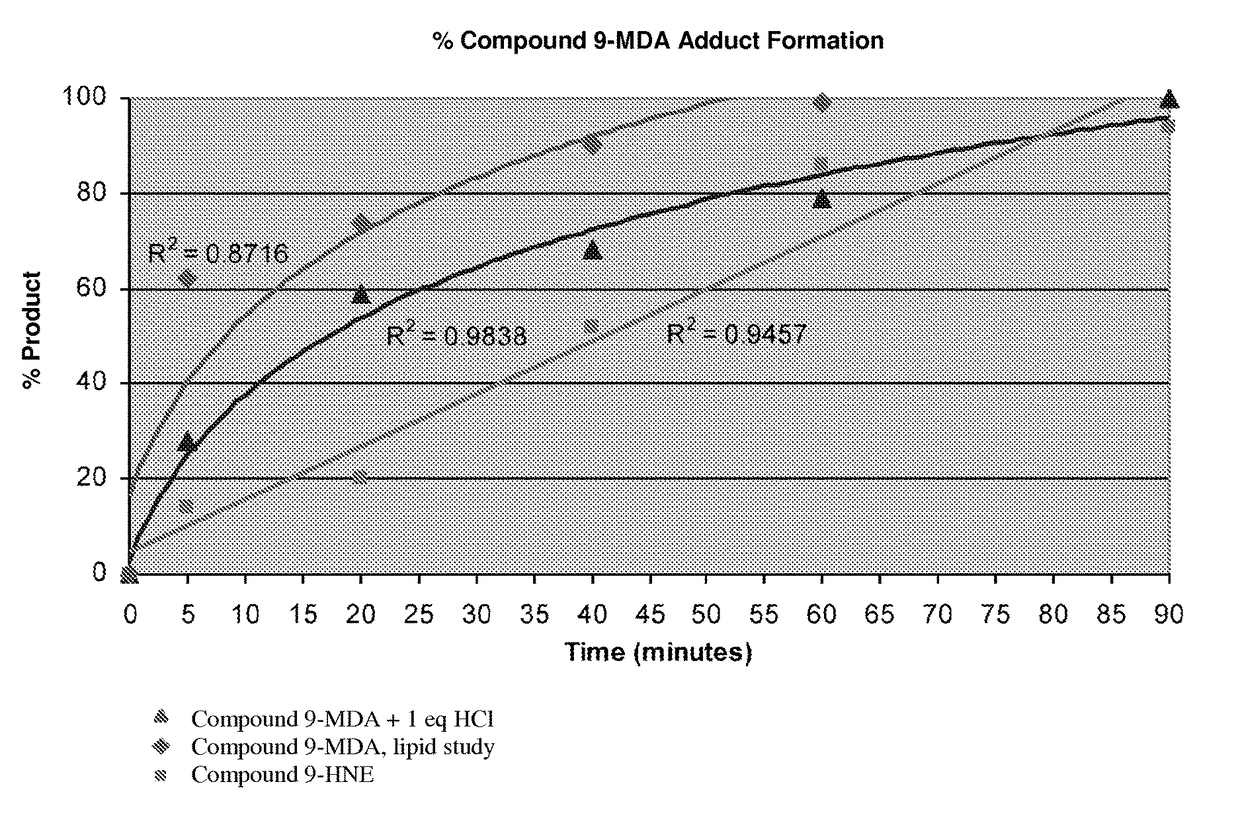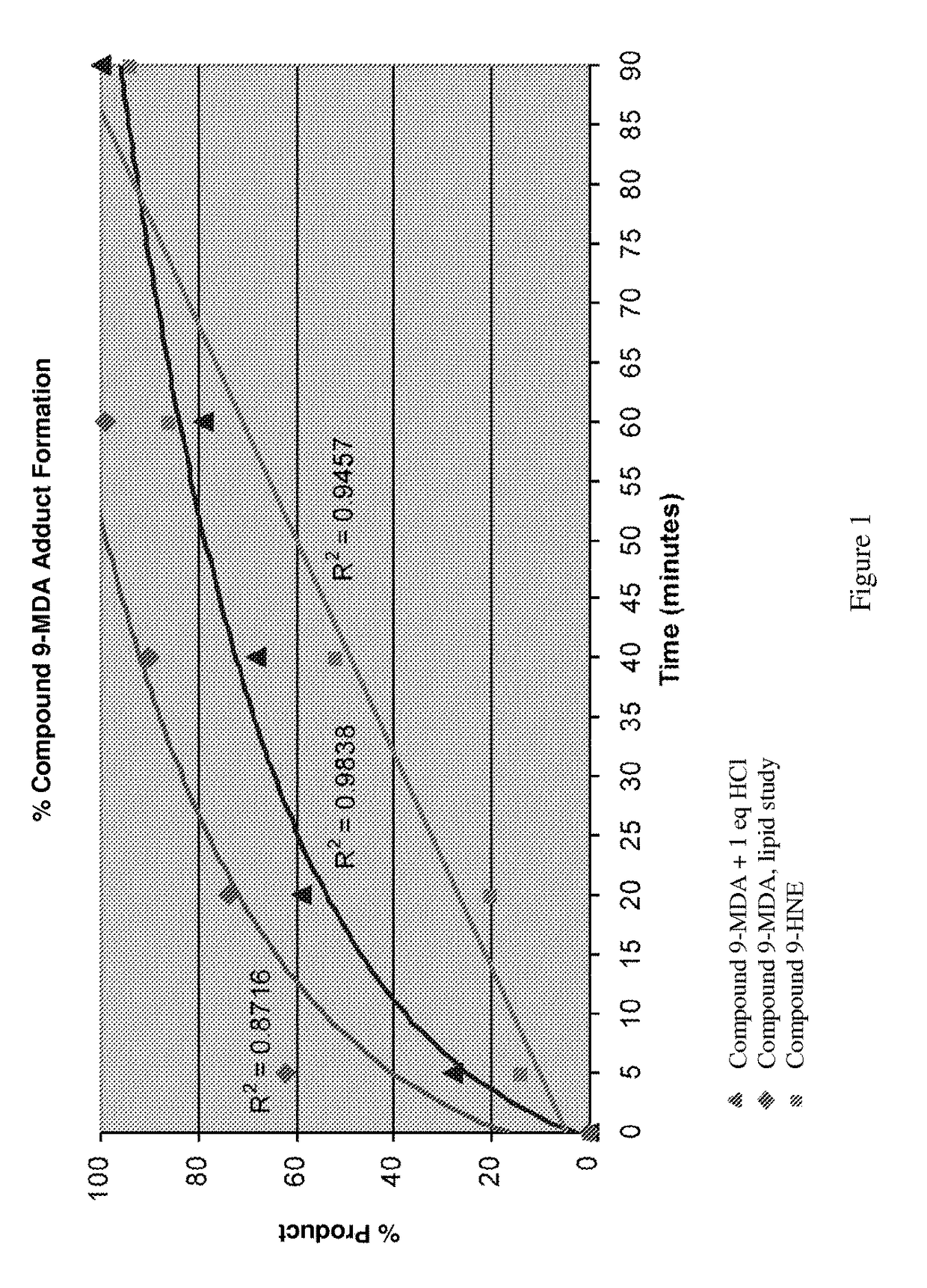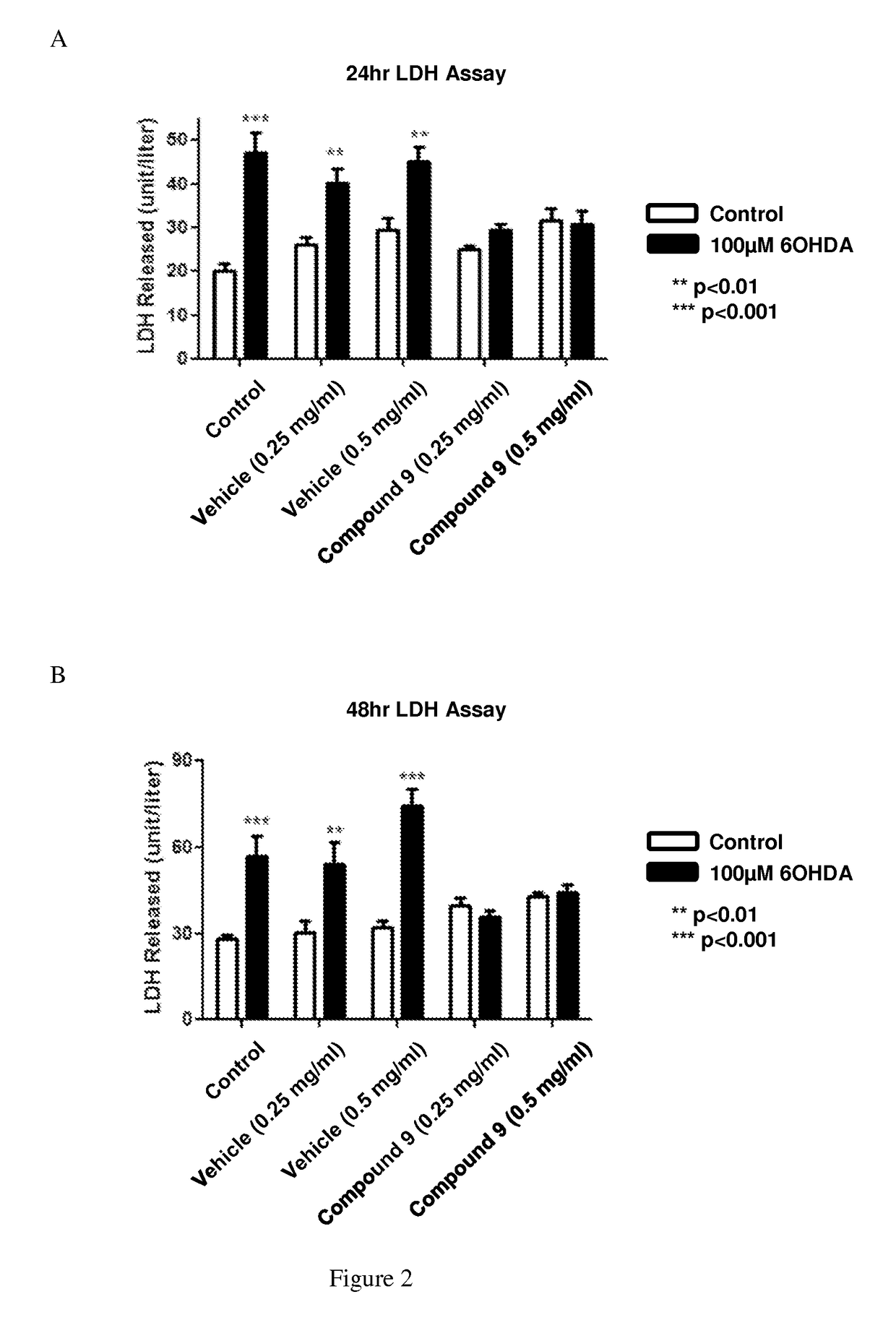Toxic aldehyde related diseases and treatment
a technology of toxic aldehyde and related diseases, applied in the field of toxic aldehyde related diseases and treatment, can solve the problems of toxic consequences, increased lipid peroxidation and resultant aldehyde generation, and achieve the effect of preventing and/or reducing the risk of a diseas
- Summary
- Abstract
- Description
- Claims
- Application Information
AI Technical Summary
Benefits of technology
Problems solved by technology
Method used
Image
Examples
example 1
[0398]Primary rat cortical cultures were placed in an incubator for 24 or 48 hours and treated with various concentrations of Compound 9. Then 20 μL of the culture media was removed for an LDH assay as described in Bergmeyer et al., Methods of Enzymatic Analysis, 3rd ed. (1983). As shown in FIG. 2, Compound 9 prevented aldehyde-mediated cell death in neurons.
example 2
[0399]Male C57BI / 6 mice were dosed with Compound 9 30 minutes before they were exposed to LPS (20 mg / kg). Two hours after the LPS exposure, blood was collected from the mice and an ELISA was conducted to determine the amount of circulating cytokines. As shown in FIGS. 3 and 4, Compound 9 treatment led to reduction in proinflammatory cytokines, such as IL-5 and IL-1β, IL-17, and TNF. Also, FIG. 4 shows that Compound 9 treatment resulted in elevated anti-inflammatory cytokines, such as IL-10. In addition, various other chemokines, such as eotaxin, IL-12, IP-10, LIF, MCP-1, MIG, MIP, and RANTES, were also decreased by Compound 9 treatment.
example 3
[0400]To determine the efficacy of Compound 9 in treating contact dermatitis, phorbol myristate acetate (“PMA”) was applied topically (2.5 μg in 20 μL) to both the anterior and posterior portions of the right pinna of mice (N=10 per group). As a control, the left pinna received 20 μL of ethanol (PMA excipient) to both the anterior and posterior portions. Six hours after the PMA application, both the right and left pinna thickness was determined. Measurements were determined at least twice from the same region of both ears, with care taken not to include hair or folded pinna. The results are shown in FIG. 5A.
PUM
| Property | Measurement | Unit |
|---|---|---|
| temperature | aaaaa | aaaaa |
| temperature | aaaaa | aaaaa |
| pH | aaaaa | aaaaa |
Abstract
Description
Claims
Application Information
 Login to View More
Login to View More - R&D
- Intellectual Property
- Life Sciences
- Materials
- Tech Scout
- Unparalleled Data Quality
- Higher Quality Content
- 60% Fewer Hallucinations
Browse by: Latest US Patents, China's latest patents, Technical Efficacy Thesaurus, Application Domain, Technology Topic, Popular Technical Reports.
© 2025 PatSnap. All rights reserved.Legal|Privacy policy|Modern Slavery Act Transparency Statement|Sitemap|About US| Contact US: help@patsnap.com



